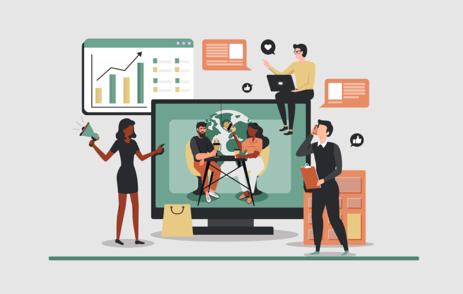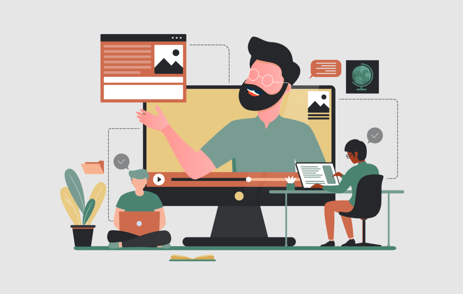A year and millions of vaccinations later, we’re all getting tired of living in the virtual world. While the future is within our field of view, we're not quite back to where we used to be. We need to continue learning how to make virtual interactions work for us in the best and most meaningful way possible.
Zoom fatigue is a well-known side effect of our current constantly plugged-in state of being. In this post, we’ll dive into the four reasons Stanford University researchers say video calls exhaust us, as well as tips for what you can do to beat the fatigue.
Why Zoom makes us so tired
Last month, Stanford University released a study examining the psychological effects of videoconferencing and why it makes us feel so tired. While we’ve heard a lot about Zoom fatigue over the course of the COVID-19 pandemic, this Stanford study was the first peer-reviewed article on the subject.
In the study, researchers identified four primary causes of Zoom fatigue and how to compensate. See the table below for a snapshot, and read the study for a complete analysis.
| Why you’re fatigued | What it means | What to do about it |
| Prolonged eye contact at a close distance | We’re not used to fixed eye gazes so close up to coworkers’ and strangers’ faces. | Reduce the size of your Zoom window so it’s not in full-screen mode. |
| Heavy cognitive load | Without the nonverbal cues we have in face-to-face conversations, Zoom makes us work harder to send and receive these signals. | Switch to audio-only to give yourself a break from video. |
| All-day mirror | We feel stressed, tired, and often negatively about ourselves after staring at our reflections for a long period of time. | Hide your camera’s video feed from your view so that only the person you’re meeting with can see you. |
| Reduced mobility | We’re glued in front of our screens, forcing us to stay fixed in one position. | Take cameras-off breaks to allow yourself to pace and move around. Find ways to position your webcam farther away to allow yourself room to move around. |
What to do when you need to schedule a Zoom meeting anyway
We understand that people are sick of virtual meetings and are dealing with Zoom fatigue, but we’re not yet at the point where it’s safe to return to the normal we once knew. Videoconferencing is here to stay for the foreseeable future and beyond. It’s up to us to learn how to better work with this format.
If you are scheduling a virtual meeting or event, here are some ideas for beating the fatigue.
- Be aware of how your attendees are feeling. Understand the four major causes of fatigue outlined above and how to combat them.
- Schedule breaks into your meetings. Let participants stretch their legs, go to the bathroom, grab a glass of water, and just disengage from the screen for a few minutes.
- Encourage participants to turn off their self-view to avoid the all-day mirror effect.
- Be conservative with the meetings you schedule. If it involves one-way communication, consider sending an email instead.
- Stick to your scheduled end times. It’s easy for virtual meetings to run long, especially when no one on the call has a hard stop. Ending the meeting at the agreed-upon time shows respect for all participants and their time.

March 26, 2021


